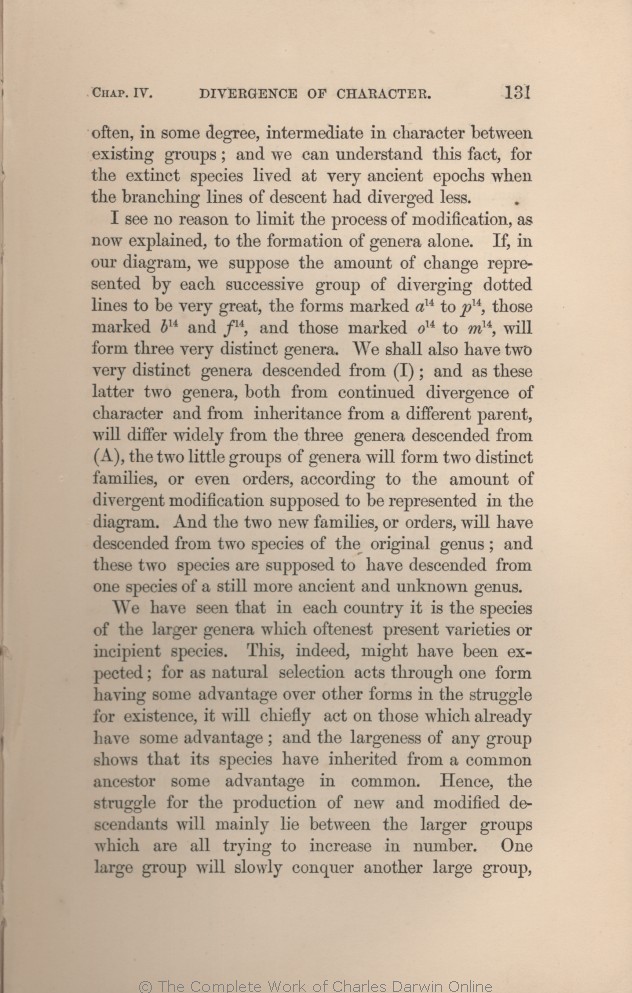often, in some degree, intermediate in character between existing groups; and we can understand this fact, for the extinct species lived at
very ancient | very ancient 1859 1860 1861 1866 1869 | | various remote 1872 |
|
|
I see no reason to limit the process of modification, as now explained, to the formation of genera alone. If, in
our | our 1859 1860 1861 1866 | | the 1869 1872 |
| very 1859 1860 1861 1866 | very 1869 1872 |
|
p
14
,
1859 1861 1866 1869 1872 |
|
p
14
1860 |
| those 1859 1861 1866 1869 1872 | | , those 1860 |
|
f
14
,
1859 1861 1866 1869 1872 |
|
f
14
1860 |
| and 1859 1861 1866 1869 1872 | | , and 1860 |
|
m
14
,
1859 1861 1866 1869 1872 |
|
m
14
1860 |
| will 1859 1861 1866 1869 1872 | | , will 1860 |
| (I); 1859 1860 1861 1866 | | (I), 1869 1872 |
| and as these latter two genera, both from continued divergence of character and from inheritance from a different parent, will differ 1859 1860 1861 1866 |
| differing 1869 1872 |
| three genera descended from (A), the two little 1859 1860 1861 1866 |
| descendants of (A). These two 1869 1872 |
| form 1859 1860 1861 1866 | | thus form 1869 1872 |
| even 1859 1860 1861 1866 | even 1869 1872 |
| will have 1859 1860 1861 1866 | | are 1869 1872 |
| genus; 1859 1860 1861 1866 | | genus, 1869 1872 |
| two species 1859 1860 1861 1866 | two species 1869 1872 |
| have 1859 1860 1861 1866 | | be 1869 1872 |
| one species of a 1859 1860 1861 1866 |
| some 1869 1872 |
| genus. 1859 1860 1861 1866 | | form. 1869 1872 |
|
|
We have seen that in each country it is the species
of | of 1859 1860 1861 1866 | | belonging to 1869 1872 |
| for 1859 1860 1861 1866 1869 | | for, 1872 |
| 1 blocks not present in 1861; present in 1859 1860 1866 1869 1872 | | Hence, the struggle for the production of new and modified descendants,
will mainly lie between the larger groups,
which are all trying to increase in number.
|
|









